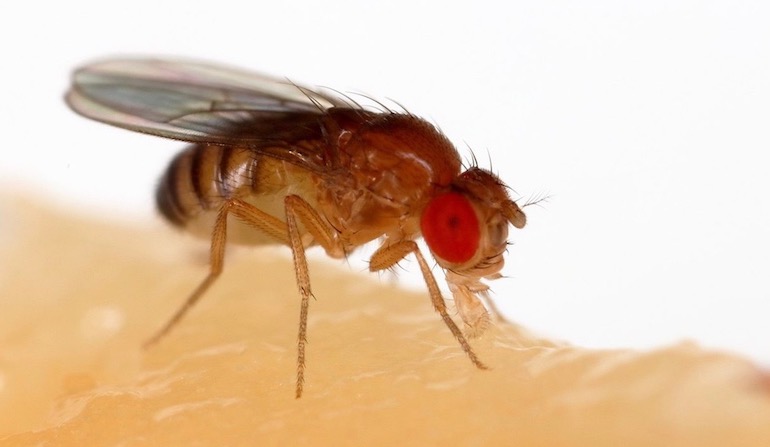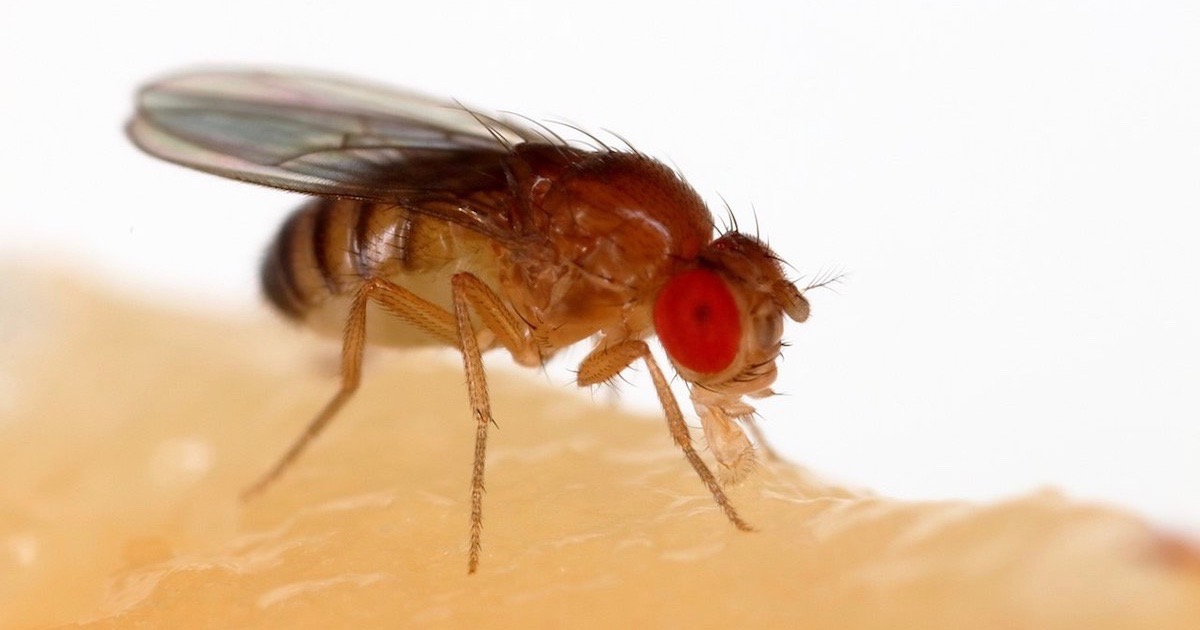 Evolution
Evolution
On the Evolutionary Origin of New Genes, Stephen Meyer Is Vindicated Again


Inevitably, to be a proponent of intelligent design is to be an optimist. It means thinking that over the long haul, the truth will be widely recognized. This optimism is not unreasonable, either, as the current year has suggested. One theme of 2018 has been the vindication of Steve Meyer’s arguments in Darwin’s Doubt. See, for example, Günter Bechly’s article here, “Alleged Refutation of the Cambrian Explosion Confirms Abruptness, Vindicates Meyer” and the report by Evolution News, “Groundbreaking Paper Shows Thousands of New Genes Needed for the Origin of Animals.” In case you’re not tired of being vindicated, Dr. Meyer, here’s another one.
A Perceptive Statement
The case here is actually a paper that was published in 2017. The paper is titled “Experimental test and refutation of a classic case of molecular adaptation in Drosophila melanogaster” and it appeared in Nature Ecology and Evolution. It begins with a perceptive statement about what ought to be required when establishing some genetic evolutionary pathway:
Identifying the genetic basis for adaptive differences between species requires explicit tests of historical hypotheses concerning the effects of past changes in gene sequence on molecular function, organismal phenotype and fitness.
This study employed such an approach while testing a widely believed evolutionary hypothesis that an enzyme in fruit flies, alcohol dehydrogenase (ADH), evolved as the enzyme mutated and acquired progressively greater ability to break down a biochemical food source found in rotting fruit. As the paper puts it, “changes in the alcohol dehydrogenase (ADH) protein of the fruit fly Drosophila melanogaster increased the catalytic activity of the enzyme and thereby contributed to the adaptation of the species to its ethanol-rich ecological niche.”
On the Origins of ADH
ADH is an enzyme that breaks down ethanol, an alcohol that derives from fermentation and is found in alcoholic drinks. The hypothesis about the origins of ADH holds that fruit flies evolved ADH so they could better consume rotting fruit. Previous studies have found that ADH in D. melanogaster is more efficient at breaking down ethanol than in a closely related species of fruit fly, D. simulans. Other studies compared the DNA sequence of ADH gene in those species. It found that in D. melanogaster there was an excess of non-synonymous mutations (mutations that change amino acid sequence) compared to synonymous mutations (mutations that change nucleotide sequence but not amino acid sequence). This statistical signature has been taken to suggest that ADH in D. melanogaster was under positive selection that changed its amino acid sequence.
The study in Nature Ecology and Evolution sought to test claims that ADH evolved by selection. It did so by reconstructing the inferred ancestral sequence of ADH in the most recent common ancestor of D. simulans and D. melanogaster, and then experimentally testing whether ADH evolved by specific mutations that were selected for increased ability to catabolize ethanol. They found that the hypothesis was refuted, based upon multiple findings:
- The in vitro catabolic ability of the presumed ancestral protein was no different from the modern versions of ADH in D. melanogaster and D. simulans.
- The same was found in vivo where they raised D. melanogaster flies with the ancestral ADH protein, and with the modern version, and found no difference in the ability to break down ethanol.
- They also tested the claim that the modern version of ADH should allow D. melanogaster to survive in more ethanol-rich environments, but experiments showed “no detectable effect on survival in the presence of ethanol” between the ancestral and modern version of ADH.
In other words, when the mutations that were inferred to have caused the evolution of ADH were actually tested, they found these changes did not increase fitness — meaning they did not improve the enzyme’s ability to catabolize ethanol. The study thus concludes:
We tested a widely held hypothesis of molecular adaptation — that changes in the alcohol dehydrogenase protein (ADH) along the lineage leading to Drosophila melanogaster increased the catalytic activity of the enzyme and thereby contributed to the ethanol tolerance and adaptation of the species to its ethanol-rich ecological niche. Our experiments strongly refute the predictions of the adaptive ADH hypothesis and caution against accepting intuitively appealing accounts of historical molecular adaptation that are based on correlative evidence.
[…]
These experiments indicate that historical substitutions in the ADH coding sequence along the D. melanogaster lineage caused none of the predicted effects on biochemical function, physiology or fitness components, refuting the widely held hypothesis of adaptive ADH divergence.
Where’s the Vindication?
So how does all of this vindicate Stephen Meyer? Chapter 11 of his book Darwin’s Doubt analysed studies purporting to explain the evolution of new genes. In a concluding section, he found that many studies on gene evolution “offer neither mathematical demonstration, nor experimental evidence, of the power of these mechanisms to produce significant gains in biological information.” (p. 227)
This paper would seem to support Meyer’s view that many claims of gene evolution are simply undemonstrated, as it states:
A hypothesis of molecular adaptation is a conjecture that particular changes in genotype during history caused particular evolutionary changes in phenotype that enhanced fitness: a signature of selection in a gene sequence may suggest such a hypothesis but cannot test it. The case of ADH shows that the existence of variation between present-day species in genotype, phenotype and fitness is also insufficient to test a hypothesis of molecular adaptation, even if it is consistent with it, because covariation alone does not demonstrate the hypothesized causal links among these forms of variation or establish the historical direction of the evolutionary trajectory that produced them.
In other words, just because you identify sequential and functional differences between two genes that are thought to be related, and those differences are potentially consistent with some adaptive hypothesis, that isn’t sufficient to demonstrate the hypothesis. At the very least, the paper argues, a proper test should reconstruct the ancestral protein and experimentally investigate whether the modern protein shows adaptations lacking in the ancestral protein.
“Word Salad”
Meyer said something very similar: the passage from Darwin’s Doubt noted above reasons that one can’t merely quantify differences between two genes and then invent a story about their evolution; experimental tests are needed to show the story is plausible. Meyer then recounts the sort of creative language invoked by evolutionary biologists to compensate for their frequent failures to provide experimental or mathematical demonstrations of their claims about gene evolution:
In the absence of such demonstrations, evolutionary biologists have taken to offering what one biologist I know calls “word salad” — jargon-laced descriptions of unobserved past events — some possible, perhaps, but none with the demonstrated capacity to generate the information necessary to produce novel forms of life. This genre of evolutionary literature envisions exons being “recruited” and/or “donated” from other genes or from an “unknown source”; it appeals to “extensive refashioning” of genes; it attributes “fortuitous juxtaposition of suitable sequences” to mutations or “fortuitous acquisition” of promoter elements; it assumes that “radical change in the structure” of a gene is due to “rapid, adaptive evolution”; it asserts that “positive selection has played an important role in the evolution” of genes, even in cases when the function of the gene under study (and thus the trait being selected) is completely unknown; it imagines genes being “cobbled together from DNA of no related function (or no function at all)”; it assumes the “creation” of new exons “from a unique noncoding genomic sequence that fortuitously evolved”; it invokes “the chimeric fusion of two genes”; it explains “near- identical” proteins in disparate lineages as “a striking case of convergent evolution”; and when no source material for the evolution of a new gene can be identified, it asserts that “genes emerge and evolve very rapidly, generating copies that bear little similarity to their ancestral precursors” because they are apparently “hypermutable.” Finally, when all else fails, scenarios invoke the “de novo origination” of new genes, as if that phrase — any more than the others just mentioned — constitutes a scientific demonstration of the power of mutational mechanisms to produce significant amounts of new genetic information. (pp. 227-228)
Notice that Meyer specifically critiques studies asserting “that ‘positive selection has played an important role in the evolution’ of genes, even in cases when the function of the gene under study (and thus the trait being selected) is completely unknown.” This paper in Nature Ecology and Evolution is critical of those same types of studies.
The paper questions why previous studies had inferred the aforementioned statistical evidence of “positive selection” in the modern D. melanogaster ADH gene given that they were unable to uncover any beneficial differences in their experimental studies of the enzyme. The investigators ask: “Why then did the original statistical analysis of the ADH coding sequence suggest positive selection?”
As Evolution News has discussed in the past (see “Does Natural Selection Leave ‘Detectable Statistical Evidence in the Genome’?”), claims about the ability to statistically infer selection through studies of synonymous to nonsynonymous mutations are highly tenuous. The article under consideration here criticizes such studies:
Many studies infer past selection from statistical signatures in genes that are involved in biological processes that might have suited species to their environments. But sequence signatures of selection can be forged by chance or demographic processes and it is difficult to predict from sequence alone how genetic changes affect phenotypes and fitness. Compelling evidence for molecular adaptation therefore requires formulating and testing explicit hypotheses about the causal links between specific evolutionary changes in gene sequence and the resulting changes in molecular function, organismal phenotype and fitness.
In Need of Experimental Evidence
Again, this corroborates Meyer’s critique: If you haven’t found experimental evidence that some function is being selected for, then “statistical signatures” of positive selection are inconclusive. In this case, the study was able to specifically test the tale of ADH evolution. It found that the changes that were inferred to have increased fitness really did no such thing.
Yet this study is a rarity. In the literature of evolutionary biology, it’s often seen as acceptable to promulgate an evolutionary account without any investigation into the specific selectable advantage provided by any mutations. Most studies simply infer or invent some story about the evolution of a gene without any experimental tests. If this study shows anything, it’s that even the most widely believed stories of gene evolution may turn out to be wrong when put to the test. Meyer said as much in 2013, and leading evolutionary biologists are saying the exact same thing.
Photo: D. melanogaster, by By Sanjay Acharya [CC BY-SA 4.0 ], from Wikimedia Commons.
